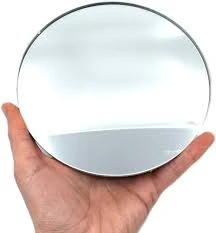

Low-E Double Glass A Smart Choice for Energy Efficiency
In the modern world, energy efficiency has become a critical concern for both homeowners and builders alike. Among the various technologies designed to enhance insulation and reduce energy consumption, low-emissivity (low-E) double glass stands out as a highly effective solution. This advanced type of glazing not only improves the energy performance of buildings but also contributes to enhanced comfort and aesthetics.
Low-E glass incorporates a microscopically thin coating that reflects infrared energy while allowing visible light to pass through. This dual capability makes it particularly valuable in both heating and cooling seasons. During the winter months, low-E glass works to retain interior heat, reflecting it back into the room. Conversely, in the summer, it reflects exterior heat away, reducing the need for air conditioning. This results in significant energy savings, which is particularly beneficial as energy costs continue to rise.
Low-E Double Glass A Smart Choice for Energy Efficiency
Moreover, the use of low-E double glass goes beyond mere energy savings; it also enhances indoor comfort. By moderating fluctuations in temperature, it helps maintain a stable and pleasant environment, enhancing the overall quality of life for occupants. Additionally, low-E glass reduces glare while moderating natural light, making living and working spaces more enjoyable.

The environmental impact of low-E double glass is also noteworthy. By significantly reducing reliance on heating and cooling systems, it decreases the overall carbon footprint of buildings. This is an essential consideration as global awareness of climate change grows. Utilizing energy-efficient materials and technologies like low-E glass aligns with sustainable building practices, promoting a healthier planet.
Beyond its energy-saving benefits, low-E double glass is available in a variety of designs and styles, seamlessly integrating with both contemporary and traditional architecture. This versatility allows architects and homeowners to enhance the aesthetic appeal of buildings while simultaneously enjoying the practical benefits of energy efficiency.
Investing in low-E double glass can yield substantial long-term savings and benefits. Although the initial cost may be higher than standard glazing options, the reductions in energy bills, improved comfort levels, and increased property value often justify the expense. Furthermore, many manufacturers offer warranties on low-E glass products, providing peace of mind for those looking to make a wise investment for their homes or businesses.
In conclusion, low-E double glass represents a smart choice for anyone looking to enhance energy efficiency, improve comfort, and embrace sustainability. As awareness of these benefits grows, it is likely that low-E glass technology will continue to play a vital role in the evolution of energy-efficient building practices. Better insulation, reduced energy consumption, and enhanced indoor living conditions make low-E double glass an essential consideration for any modern building project.